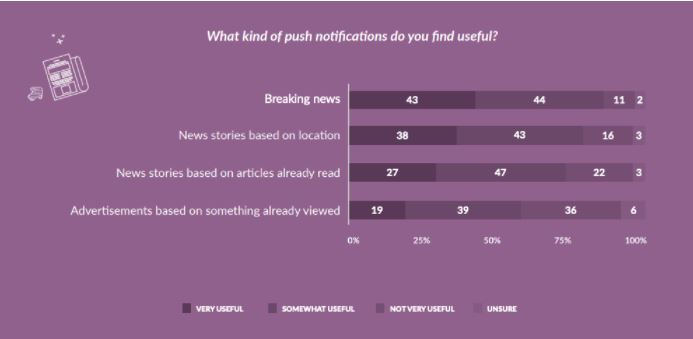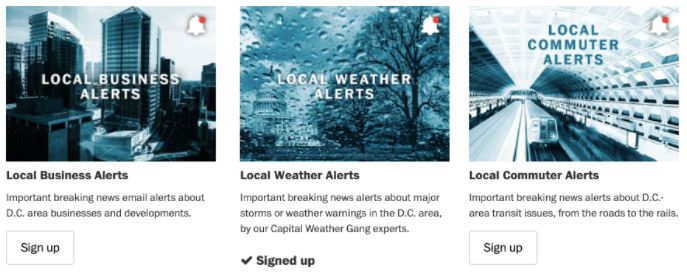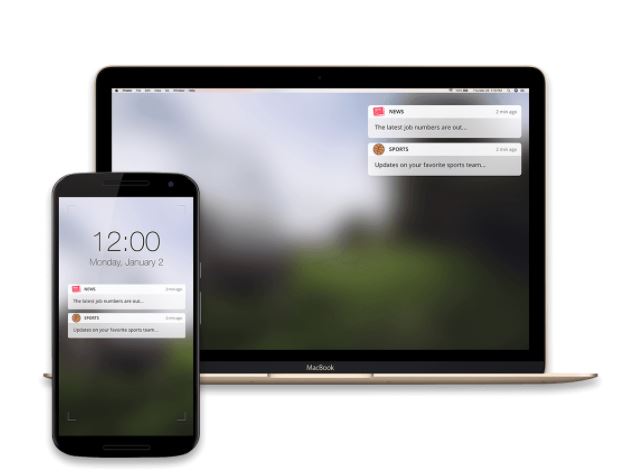Push notifications are a huge part of today’s digital experience —they come to your phone and/or desktop instantaneously, keeping you clued in to what’s happening on your favorite apps or websites, even if they’re not actually open at the moment.
It’s no wonder that 72% of consumers have enabled push notifications. Specifically, 65% of people enable them as long as they trust the company and 50% allow them when the content is very relevant to their interests. Also, 87% of people find them useful for breaking news, 81% for location-based stories, and 58% for personalized ads.

Still, while push notifications often get lumped together as “those real-time alerts,” there is a difference between web (or browser push notifications) and mobile or app push notifications. And it’s important for publishers and brands to understand what sets the two apart.
By getting to the core of what push notifications are — and how they work across platforms — businesses can use them to drive customer engagement and revenue, and build audience relationships.
Here’s what you need to know.
What are web push notifications?
Web push notifications are short messages that are sent to a user’s browser, usually via a website where they opt in to receive these messages.
On The Washington Post website, for example, subscribers can sign up for a range of breaking news alerts about national and local business, politics, travel, and more:

Once enabled, web push notifications often pop up in a small box on the corner of the user’s screen, inviting them to read the message and click through to an article or landing page.
What’s the difference between web push notifications and mobile push notifications?
While web push notifications pop up via a website browser, such as on a desktop or laptop, mobile and app push notifications are delivered directly to the user’s mobile screen, even if they’re not currently using their device.
On a desktop, for example, someone might be reading The New York Times but receive a push notification from Bloomberg about a change in the stocks they’re tracking. On a mobile device, someone might be scrolling through Instagram but receive a push notification from their inbox about an urgent work email.
Here’s a quick look at what desktop and mobile push notifications might look like:

Brands and publications can enable both web and mobile device push notifications to expand their reach, diversify their marketing mix, and boost customer engagement with personalized content recommendations.
What are the benefits of web push notifications?
Web push notifications can be a valuable marketing channel for businesses that want to grow their audiences and reach customers directly. After all, almost half of all website traffic comes from desktop devices.
In fact, desktop usage increased during the COVID-19 pandemic as more people began working and consuming content from home. Statista reported a 32% jump in global PC and desktop traffic in March 2020, causing publishers to shift their budgets from mobile to desktop for the first time in years.
Diving in further, there are many benefits of launching push notification campaigns, including:
- Increasing website traffic. Push notifications reach users when they’re not on your website and drive them back to your site, opening up new opportunities for engagement and views.
- Driving revenue through monetization. Publishers can place ads in their push notifications, guaranteeing 100% viewability and personalized targeting.
- Building direct relationships. Just like email, push notifications are direct-to-consumer, opt-in channels that are prime for nurturing loyal subscribers, upselling new customers, and re-engaging inactive users.
Trivia website GoGy Games, for example, drove tens of thousands of website visitors each day with push notifications. Looking for a new and innovative way to increase engagement and grow its user base, the publisher launched these real-time alerts to let users know about trending and popular games that match their interests.
GoGy could also schedule notifications to reach people based on their time zones, so users in Israel, New York, and Las Vegas were each engaged at the optimal moment. And it worked — bringing people back to the site to continue playing and driving ad revenue.
How do web push notifications work?
Web push notifications can be easy to use. Publishers can send web push notifications by installing a piece of code on their website.
They’re also easy to create, often containing the follow key elements:
- Title or publication name
- Short message, such as “Enjoy this special offer” or “Check out this trending article”
- Link back to the website, article, or landing page
- Icon, logo, or image accompanying the text
Many types of browsers support web push notifications, too, including popular options like Chrome, Safari, and Firefox. So all publishers have to do is work with a push notification service to set up their operation. Then they can create an opt-in process for users to sign up on their website.
What type of content can you put in a web push notification?
Push notifications are a blank slate for many different types of content — promotional, educational, informative…you name it.
For instance:
- Welcome messages for new subscribers
- Breaking news updates about topics like sports, politics, and pop culture
- Product releases or recommendations based on engagement and purchase history
- Trending stories that are gaining traction across your site
- Special offers or discounts
- Abandoned shopping cart reminders
How can you get started with web push notifications?
Jeeng gives publishers the tools they need to deliver personalized and automated push notifications to their audiences. All it takes is one line of code and that push notification strategy is up and running, building 1:1 connections with users.
The platform analyzes readers’ unique interests and behaviors to target them with the most relevant content you publish. It also lets you monetize those notifications for increased revenue and ad exposure, bringin brand partners in for new and exciting advertising opportunities.
Ready to get started with web push notifications? Reach out today to learn more.

